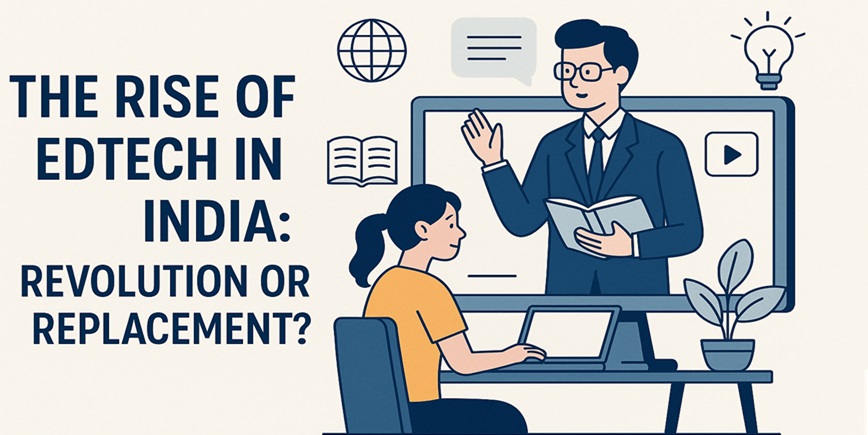Introduction
Education in India has undergone a massive transformation, especially in the past decade. The rise of EdTech (educational technology) platforms has changed the way students learn, teachers teach, and parents support. From online classes to AI-powered personalized learning, EdTech is making education more accessible, affordable, and engaging. Let’s explore how this digital wave is redefining the future of education in India.
The Need for Digital Learning
- The COVID-19 pandemic accelerated the shift toward online learning.
- Lack of infrastructure in rural areas highlighted the need for accessible digital solutions.
- Rising competition and academic pressure pushed students to seek more flexible learning options.
Popular EdTech Platforms in India
- Byju’s, Unacademy, Vedantu, and Physics Wallah are leading the Indian EdTech market.
- These platforms offer video lectures, interactive quizzes, live doubt-clearing sessions, and mock tests.
- Many provide multilingual content to cater to students from different regions.
Personalization Through AI and Data Analytics
- AI-driven algorithms analyze student performance and create customized learning paths.
- Adaptive learning helps students progress at their own pace, focusing on weaker areas.
- Predictive analytics guide teachers to offer more targeted support and feedback.
Benefits of EdTech for Students
- Flexibility to learn anytime, anywhere from smartphones or laptops.
- Access to the best teachers and resources beyond traditional classrooms.
- Improved engagement through gamification, interactive videos, and real-time assessments.
How EdTech Helps Teachers
- Teachers can use digital tools to create dynamic and interactive lesson plans.
- Detailed analytics provide insights into student performance and engagement.
- Automated grading and online assignment systems save time and reduce manual work.
Addressing Challenges of Traditional Education
- Overcrowded classrooms and limited teacher availability are major issues in India.
- EdTech platforms help bridge these gaps by offering personalized attention and resources.
- Students from remote or underprivileged backgrounds gain access to quality education.
Challenges Facing EdTech
- Digital divide: lack of internet access and devices in rural and economically weaker sections.
- High data costs and unreliable connections affect online learning experiences.
- Maintaining student discipline and motivation in virtual classrooms remains challenging.
The Future of EdTech in India
- Hybrid models combining online and offline learning will become mainstream.
- Virtual reality (VR) and augmented reality (AR) will make learning more immersive.
- More focus on skill development, career counseling, and vocational training will emerge.
Conclusion
EdTech is no longer just a support tool but an essential part of the Indian education ecosystem. It promises a future where every student can learn in a way best suited to them, regardless of geography or background. As technology continues to evolve, the possibilities for education in India are limitless.


